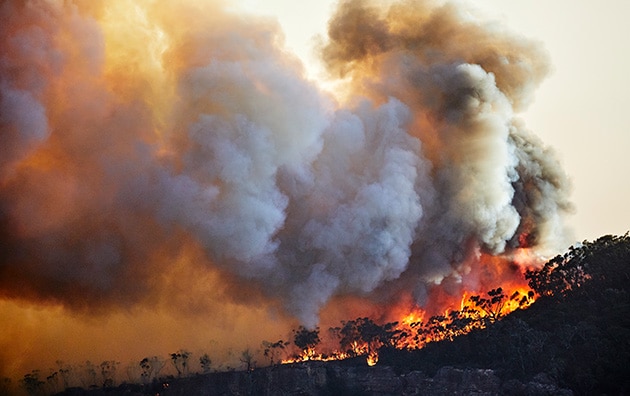Air Quality Health Concerns Related to Wildfire Smoke


How Do Wildfires Affect Air Quality?
Smoke and ash from wildfires contain chemicals, gases and fine particulates that can harm health. These microscopic particulates can get into your eyes and respiratory system, causing burning eyes, runny nose, and difficulty breathing, and may lead to respiratory illnesses. The fine particulates also can aggravate chronic heart and lung conditions.1
While the heaviest concentrations of these hazardous components may occur outdoors, they may also affect the air quality of indoor spaces. Therefore, it is important to prepare and have a plan to help minimize exposures and potentially harmful effects. For those living close to the wildfire, keep track of nearby fires and be prepared to evacuate if needed.
Reducing Exposure to Wildfire Smoke and Poor Air Quality
Here are some ways to help minimize exposure to wildfire smoke:
- Reduce outdoor job tasks, stay indoors as much as possible, and limit physically strenuous activities,
- Identify and reduce indoor air pollution sources, such as smoking, cooking, using a wood burning stove, or engaging in any activity that generates smoke or particulates, and
- Consider using air conditioners, air filters and air cleaners to help reduce particulates from building up indoors. Portable air filtration devices with High Efficiency Particulate Air (HEPA) filters can also be helpful in reducing particulates from the air.
Indoor Air Quality
To help maintain good indoor air quality during wildfire events, it is important to keep windows and doors closed, and maintain mechanical systems, such as heating and air conditioning, to help filter the air entering the building. High-efficiency heating, ventilation and air-conditioning (HVAC) filters (rated MERV 13 or higher) can help reduce particulate concentrations indoors. Determine if your HVAC system has a fresh air intake and consult manufacturer’s guidance on how to close the intake. Recirculate indoor air when possible to help minimize air intake during periods of high outdoor smoke concentrations.
Be prepared for power outages that could affect ventilation systems. It may be essential to have a back-up power supply, such as generators, to help keep a steady air flow within the facility. Be sure to follow safe generator operation procedures.
Outdoor Air Quality
An important factor for assessing outdoor air quality during wildfire events is the Air Quality Index (AQI), which is an index used for reporting daily air quality. The AQI is provided for several air pollutants. In the case of a wildfire event, it is important to monitor the AQI of PM2.5. These particulates have an aerodynamic diameter of 2.5 micrometers or smaller and can penetrate deeply into the lungs, potentially causing harm. During wildfire events in your area, review federal and local sources to check the AQI forecasts for PM2.5.2
Follow alert guidance and take action to help protect from exposure to excessive smoke. If travel by vehicles is necessary, keep the windows and vents closed.
When working outside, find ways to control exposures by enclosing work activities, for example, by utilizing temporary structures or moving work activities indoors. If work outdoors is considered essential, use proper respiratory protection equipment, such as disposable filtering facepiece respirators (dust masks), other half facepiece respirators or full facepiece respirators.3
Being prepared to address air quality from a wildfire can help protect people near the wildfire as well as in all the affected areas. Learn more about how to help prepare for a wildfire.
Sources
1 https://www.canada.ca/en/environment-climate-change/services/air-quality-health-index/wildfire-smoke.html
2 https://www.canada.ca/en/environment-climate-change/services/air-quality-health-index/frequently-asked-questions.html
3 https://myhealth.alberta.ca/Alberta/Pages/wildfire-protecting-yourself-and-your-family.aspx